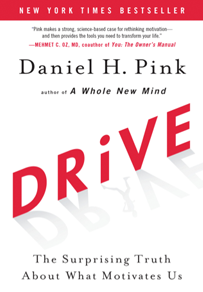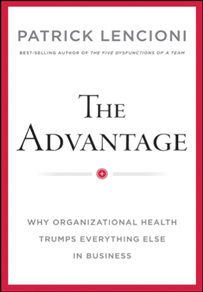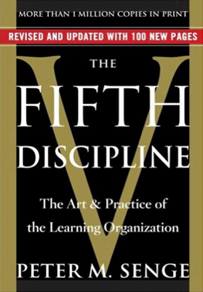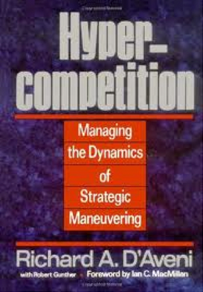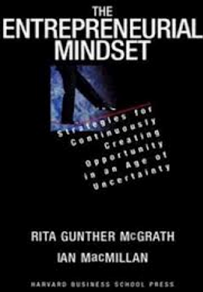Suggested Reading
Browse by Subject
-
Drive
The Surprising Truth About What Motivates Us
by Daniel Pink
The way we structure organizations almost always assumes that the prospect of greater financial reward is the primary factor in human motivation. That’s a mistake, Dan Pink says in “Drive.” Drawing on four decades of scientific research on human motivation, Pink reveals the gap between what science knows and what business does—and how it affects performance. Pink argues that while the old-fashioned carrot-and-stick approach worked successfully in the 20th century, it’s the “wrong” way to motivate people for today’s challenges. In “Drive,” Pink contends that it’s important for organizations to pay people fairly, but then they must focus on the three elements of true motivation—autonomy, mastery, and purpose. Throughout the book, Pink offers techniques for putting these elements into action to unleash peoples’ inner drive and provides plenty of examples of companies that are taking new approaches to motivation. “Drive” is a great book for helping leaders, at all levels, understand motivation in today’s world.
-
Playing to Win
How Strategy Really Works
by A.G. Lafley and Roger Martin
Are you just playing—or playing to win? Strategy is not complex. But it is hard. It’s hard because it forces people and organizations to make specific choices about their future—something that doesn’t happen in most companies. “Playing to Win” shows how leaders in organizations of all sizes can guide everyday actions with larger strategic goals built around the clear, essential elements that determine business success—where to play and how to win. Lafley and Martin have created a set of five essential strategic choices that, when addressed in an integrated way, will move you ahead of your competitors. They are: (1) What is our winning aspiration? (2) Where will we play? (3) How will we win? (4) What capabilities must we have in place to win? (5) What management systems are required to support our choices? The stories of how Proctor & Gamble repeatedly won by applying this method to iconic brands such as Bounty, Gillette, Swiffer, and Febreze clearly illustrate how deciding on a strategic approach—and then making the right choices to support it—makes the difference between just playing the game and actually winning. ”Playing to Win” will help leaders at all types and sizes of companies to become more effective, courageous and creative.
-
The Advantage
Why Organizational Health Trumps Everything Else in Business
by Patrick Lencioni
Patrick Lencioni argues that the seminal difference between successful companies and mediocre ones has little to do with what they know and how smart they are and more to do with how healthy they are. An organization is healthy when it is whole, consistent and complete, when its management, operations and culture are unified. Healthy organizations outperform their counterparts, are free of politics and confusion and provide an environment where star performers never want to leave. “The Advantage” provides leaders with a four-discipline model for achieving organizational health: build a cohesive leadership team, create clarity, overcommunicate clarity, and reinforce clarity. In “The Advantage,” Lencioni brings together many of the themes cultivated in his other best-selling books and delivers a cohesive and comprehensive exploration of the unique advantage organizational health provides. This practical guide is a must-read for all managers and executives.
-
The Fifth Discipline
The Art & Practice of the Learning Organization
by Peter Senge
In “The Fifth Discipline,” Peter Senge contends that over time the only sustainable competitive advantage is your organization’s ability to learn faster than the competition. The basic rationale for “learning organizations” is that in situations of rapid change only those that are flexible, adaptive and productive will excel. For this to happen, it is argued, organizations need to discover how to tap people’s commitment and capacity to learn at all levels. Senge describes five disciplines that must be mastered at all levels of the organization: (1) personal mastery, (2) mental models, (3) shared vision, (4) team learning, and (5) systems thinking. As Senge explains, the fifth discipline is particularly important because it involves analyzing the organization’s complex system of relationships and removing obstacles to true learning. The “Fifth Discipline” provides the insights to help transform organizations into interconnected, aligned, continuous learning systems that produce consistently positive results.
-
Power
Why Some People Have It—And Others Don’t
by Jeffrey Pfeffer
Jeffrey Pfeffer suggests that talent, intelligence, performance, and likeability alone are not the key to moving up in an organization; instead, he argues political skill, self promotion, building relationships, cultivating a reputation for control and authority, and perfecting a powerful demeanor are vital drivers of advancement and success. Case studies feature the careers of leaders like G.E. CEO Jack Welch, General George Patton, Time CEO and Chairman Ann Moore, Lt. Colonel Oliver North, and President Bill Clinton. Filled with frank, practical insights, and even contrarian advice, “Power” offers unexpected—and aggressive—directions on how to advance and flourish in an ever-more competitive work world. This book has a realpolitik analysis of human behavior that isn’t for everyone but its candor and straightforwardness offers insights into how power is successfully built, maintained, and employed in organizations. Reading “Power” may make you uncomfortable, but it will provide an understanding of the political dynamics at play in organizations small and large.
-
Deals from Hell
M&A Lessons That Rise Above the Ashes
by Robert Bruner
About half of all merger and acquisition transactions destroy value for the buyer’s shareholders, and about three-quarters fall short of the expectations prevailing at the time the deal is announced. In “Deals from Hell,” Robert Bruner uncovers the real reasons for these mishaps by taking a closer look at twelve specific instances of M&A failure. Through these real-world examples, he shows readers what went wrong and why, and converts these examples into cautionary tales for executives who need to know how they can successfully navigate their own M&A deals. By addressing the key factors to M&A success and failure, this comprehensive guide illustrates the best ways to analyze, design, and implement M&A deals. “Deals from Hell” helps readers avoid the common pitfalls and presents them with a clear framework for thinking about how to make any M&A transaction a success.
-
Financial Statement Analysis
A Practitioners Guide
by Martin Fridson and Fernando Alvarez
In “Financial Statement Analysis,” Martin Fridson and Fernando Alvarez provide the analytical framework necessary to evaluate financial statements. “Financial Statement Analysis” provides guidelines on how to interpret balance sheets, income statements, and cash flow statements. Fridson and Fernando offer information for maximizing the accuracy of forecasts and a structured approach to credit and equity evaluation. Filled with real-life examples and expert advice, “Financial Statement Analysis,” will help non-financial managers gain a firm understanding of the techniques needed to interpret financial statements.
-
Hypercompetition
Managing the Dynamics of Strategic Maneuvering
by Richard D’Aveni
In “Hypercompetition,” Richard D’Aveni contends that competitive moves and countermoves escalate so quickly today that the traditional sources of competitive advantage can no longer be sustained. To compete in an environment in which advantages are rapidly created or eroded, D’Aveni argues that a company must fundamentally shift its strategic focus. He constructs an operational model that shows how firms move up “escalation ladders” as advantage is continually created, eroded, destroyed, and recreated through strategic maneuvering in four arenas of competition: (1) cost-quality advantages, (2) timing and know-how advantages, (3) strongholds using entry barriers and, (4) deep pockets. Using examples from hypercompetitive industries, D’Avenie demonstrates how hypercompetitive firms succeed in dynamic markets by disrupting the status quo and creating a continuous series of temporary advantages. “Hypercompetition” is an operating manual of strategy and tactics for leaders of companies in hypercompetitive industries.
-
The Value Profit Chain
Treat Employees Like Customers and Customers Like Employees
by James Heskett, Earl Sasser, and Leonard Schlesinger
Heskett, Sasser, and Schlesinger asked the question of why a few service enterprises seem to be consistently better at what they do than their competitors. The authors argue that focusing on the employee-customer relationships will enable any organization to deliver results and process quality and still be a low-cost provider. It is their premise that “today’s employee satisfaction, loyalty, and commitment strongly influence tomorrow’s customer satisfaction, loyalty, and commitment and ultimately the organization’s profit and growth.” Heskett, Sasser, and Schlesinger call this quantifiable set of relationships The Value Profit Chain and show that, when it is used as a simple organizing principle, it becomes an effective, fundamental driver of change in any organization. The Value Profit Chain should be read by every forward-thinking manager.
-
The Entrepreneurial Mindset
Strategies for Continuously Creating Opportunity in an Age of Uncertainty
by Rita McGrath and Ian MacMillan
“The Entrepreneurial Mindset” is a blueprint for building entrepreneurial organizations. Rita Gunther McGrath and Ian MacMillan have written both a guide to energizing the organization to find tomorrow’s opportunities and a set of entrepreneurial principles, which can be used to transform your market. Using lessons drawn from leading entrepreneurs and entrepreneurial companies, “The Entrepreneurial Mindset” presents a set of practices for capitalizing on uncertainty and rapid change. This book provides simple but powerful ways to stop acting by the old rules and start thinking as an entrepreneur. “The Entrepreneurial Mindset” is about succeeding in an unpredictable world. It will help everyone from entrepreneurs to managers of large corporations develop insights to build entrepreneurial organizations.


